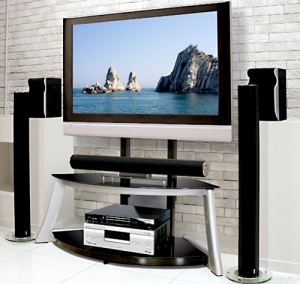
As demand for connected devices expands, Internet-connected TVs form a category poised for growth and evolution. According to new forecasts from ABI Research, the estimated 19% of flat panel TVs shipping with Ethernet in 2010 will grow to 46% in 2013, and connectivity is expected to become a mainstream feature. What will viewers see and interact with on these connected sets? According to industry analyst Michael Inouye, "New features will include media guides/browsing, Web browsing, and more tightly integrated social and information-based datasets." New opportunities for advertising and cross-marketing will flow from these developments too, as well as new roles for the television manufacturers. "TV makers no longer want to build ‘dumb screens,’" says Inouye. "Rather than simply selling boxes, TV makers themselves could try to secure part of the revenue generated by ads their devices present."
TV makers won’t be providing all that content themselves, of course. Netflix, for instance, has an application available for use with connected TVs. The tight integration of software and hardware raises difficulties, however, because each manufacturer’s combination of hardware and operating system works in different ways, so applications must be customized for each brand of television. That has discouraged some app developers, but others are pushing ahead.
Then there’s the networking: Wi-Fi has made some early headway, but wired formats are more robust, especially for HD content. G.hn, HomePNA, MoCA, and Powerline are all contenders in the long term, perhaps displacing the currently most robust solution, Ethernet.
There are some early efforts to standardize all this multiplicity: Vudu streams everything from the Cloud. An Android OS would help compatibility. But such initiatives will take time to mature. Inouye concludes, "This market is very fluid and uncertain, and with so many parties vying for a piece of the action, that fluidity may persist for years."
ABI Research’s new study, "Internet-Connected TVs" covers the potential evolution of the connected TV hardware and related software markets. It includes historical data and forecasts for the years 2002-2015. It is included in two ABI Research Services: Connected Home and Digital Media. ABI Research provides in-depth analysis and quantitative forecasting of trends in global connectivity and other emerging technologies. From offices in North America, Europe and Asia, ABI Research’s worldwide team of experts advise thousands of decision makers through 28 research and advisory services. Est. 1990. For more information visit www.abiresearch.com.





